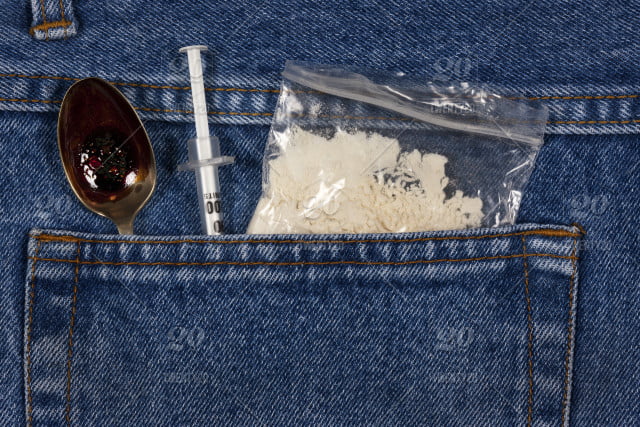In the third of our Modern Slavery articles we take a look at how human traffickers and modern slavery masters target children to fulfil specific markets. The most abhorrent of these is sexual exploitation where children are forced into brothels or used for child pornography. Other areas where the exploitation of children is prevalent are illegal adoption and “County Lines” drug supply.
Illegal Adoption
There are strict rules in the UK governing the adoption of children from overseas and it can only take place if the following criteria are present:
- the child can’t be cared for in a safe environment in their own country
- the adoption would be in their best interests; and
- the adopter has been assessed as eligible and suitable to adopt from overseas by an adoption agency in the UK.
Private adoptions are illegal and it is an offence for a person other than an adoption agency to make arrangements for the adoption of a child or place a child for adoption, unless the proposed adopter is a relative or is acting according to a High Court judgement. Anyone receiving a child through illegal adoption, also commits an offence.
Despite the law, illegal adoptions do take place for a variety of reasons. Some are people desperate for a child who are prepared to pay a substantial amount of money, whilst others adopt or foster children to defraud the benefits system. Whatever the reason, illegal adoption is a lucrative business and there is a black market for babies and children to be trafficked into the UK. A typical scenario is where an ‘orphanage’ or ‘baby factory’ pay a slave master and trafficker a sum of money to supply children. The orphanage then sells the child on through a broker to the respective client. The cost of a child can range between £10,000 and £30,000. Supply to the orphanage can occur in several ways but often involves the child being kidnapped from the mother, or simply being sold by the family. Agencies use the internet to advertise the children and broker a deal between the orphanage and client. Even where the buyer has the child’s best intentions at heart, they may be unwittingly involved in trafficking and potentially much worse.
Sexual Exploitation
The abduction, trafficking and enslavement of children occurs to satisfy three main markets – sexual exploitation (formerly referred to as prostitution) , child pornography and child ‘sex tourism’. All three overlap and it is not uncommon for children to be abused across all three areas. Academics estimate that, up to 1 in 3 children that are sold into the sex trade, are also used by pornographers. It is thought that there may be as many as 10 million children worldwide being exploited in the sex industry. For the perpetrators, it is a lucrative business, due to the high demand, fueled by the Internet which offers child sex offenders a low risk of being identified and prosecuted.
The impact on children is obvious but cannot be understated. They are faced with extreme violence, torture and death. They are forced to live in perilous and unsafe environments, without proper sanitisation or access to healthcare. Abusers often take no precautions, so victims are exposed to STD’s including HIV, unwanted pregnancy, infections, diseases, genital scarring and disfigurement. Many will have been drugged and forced to become drug dependent. They will suffer from psychological trauma, suffer depression, have suicidal thoughts which will affect their emotional and behavioural development.
Remember – trafficking doesn’t necessarily mean a child from abroad. The numbers of British born children trafficked in the UK is higher than most people think.
Forced Criminality
Children are forced or used in a wide range of crimes. Some are visible like pickpocketing (dipping gangs), illegal street trading, bag snatching and begging. It is a fact that in the UK organised Eastern European gangs traffic children into the country specifically for criminal enterprise. It is a lucrative and relatively low risk business for the traffickers, for if caught the children are often much too frightened of their abusers to reveal any in-depth information to the authorities. In some cases children are unwilling to reveal information about their situation because their handlers are their parents or other family members. A report from 2010 estimated that a child could earn as much as £100,000 a year, from a combination of begging, stealing and benefit fraud. Other crimes such as benefit fraud and maintenance of cannabis factories go unseen by the wider public.
Without a doubt there is a major issue with children arrested for criminal offences, who are subsequently placed into emergency Local Authority accommodation, only to go missing hours later and falling back into the hands of their handler. It is essential that where a child has been forced into criminality, professionals quickly recognise the signs. A realistic action plan needs to be put in place to deter the abuser from discovering their whereabouts and prevent the child going missing.
Suggested action plan to prevent a child placed into Emergency Accommodation from going missing.
- Ensure that an interpreter is used from the outset.
- Ensure an Immigration Officer is involved at an early stage.
- 1st Responder to complete the NRM.
- Obtain biometric details (fingerprints) and a photograph. There often differing opinions around this, but the importance of obtaining both cannot be overstated).
- Remove the child’s access to a mobile phone.
- Remove any paper that contains mobile numbers or addresses.
- Ensure that Emergency Accommodation is the right placement and that the carer is experienced in unaccompanied children.
- Ensure that the child is escorted to the placement.
- Professionals to take care in talking openly about the address and location of the placement in front of the child.
- Ensure that the Carer is fully aware that the child could have potentially been trafficked or is a victim of modern slavery.
- Early assessment of the child’s needs by Social Care.
- Early involvement of NGO specifically specialising in support of trafficking victims.
The plan broken down – It is a fact that too many trafficked children go missing from Local Authority care, who are never seen again and tragically fall back into the hands of their traffickers/exploiters. The ECPAT ‘Heading back to harm’ report in November 2016 found more than a quarter of all trafficked children in the UK care system went missing at least once in the 12 months to September 2015. It also found that some 593 unaccompanied children in the UK (13% of the total) also disappeared at least once. Of those, 207 trafficked and unaccompanied children have not been found.
It is our view that a good action plan will minimise that risk of a child going missing. Imagine that you are on holiday in a remote part of a foreign country where no one speaks English. You lose your purse/wallet with you cash, passports and credit cards. What do you do, how do you communicate, where can you get help. Imagine your anxiety, then multiply that a thousand-fold. That is what the child will be feeling. A strange place surrounded by authority figures, fearing the worse. It is vital therefore that an Interpreter is introduced early on. An over reliance on Language Line won’t go far in putting the child at ease. Ensure the interpreter is suitable, brief them on the circumstances, what you expect, the length of time the case may take and establish whether they can stay with the victim for the ‘long haul’. Don’t change interpreters or professionals unless requested to do so by the victim.
Ensure that an Immigration Officer is involved at an early stage. The UKVI have a statutory duty to safeguard children which shouldn’t end when a child is passed to the police or Local Authority to deal with. The UKVI may have vital information that could assist in identifying the child’s trafficking history. Confirm that the 1st Responder has completed the NRM.
If a child has been arrested and is in police custody, police should wherever possible obtain biometric details and a photograph if a legal power to do so exists. It is not suggested that the child be criminalised, but having no biometric identification available, will seriously hamper future attempts to recover the child. Biometrics make it easier in the future if the child uses false identities or provides a cover story, provided to them by the exploiter. Care should be taken to when explaining to the child why their fingerprints and photograph (sometimes DNA) are being taken. Tell them that the reason is that in the UK authorities care about children who may go missing and do their best to look after them. The use of a face to face interpreter will aid this process.
If a child has been arrested by police and trafficking or slavery is expected, is it necessary for them to be detained in a police custody centre? Wouldn’t a police ‘comfy suite’ or Child House (based on the Icelandic Barnahus model) be a better and option. Used regularly for victims of serious sexual assault, they could certainly be an option for a trafficked child.
The exploiter will often provide the victim with a contact number or potential address to go to once they go missing from LA care. Police, immigration or social care should remove the child’s mobile phone. If the victim is believed to have been kept in slavery or trafficked, then a crime has been committed and police have the right to seize anything which is evidence of an offence. This would include any documentation or paper that contains mobile numbers or addresses of potential traffickers. Where the police haven’t seized the phone, then the LA should consider whether they should prevent access to a phone. What would a ‘reasonable parent do’?
Ensure that emergency accommodation is the right placement. A Foster Carer or care staff with specialist training, knowledge of trafficking issues is preferable. Where possible, it is also beneficial to use a carer from the same cultural/religious background. Ensure that the carer is fully briefed and is on heightened awareness that the child could go missing. Research shows that trafficked children usually go missing within a week, the first 48 hours being the optimum high-risk time. Care should be taken when talking openly about the address and location in front of the child. This includes the wider area. If the child doesn’t know where they are, then this will minimise their option of going missing straight away or passing the information onto the trafficker. Ensure that the child is escorted to the placement. There have been incidences of older children being transported to hostels unescorted in a taxis , paid for by social care. Finally, an early assessment of the child’s needs is essential as is the involvement of a specialist NGO. The idea of a Child Trafficking Guardian is a good one. A person who is the child’s mentor, someone to who will offer consistent support, listen to the voice of the child and speak up for the child’s best interests throughout the process.
Forced and Early Marriage
Marriage of children under 16 in the UK is rare. However, forcing children into marriage is still practised across the world including sub-Saharan Africa, the Asian Subcontinent and in some parts of the Middle East. Impoverished families will sell their children into marriage for several reasons – to settle debts, to raise money and for ‘honour’. Child brides are more likely to experience physical, mental and sexual abuse.
Drug Supply
In our view ‘County Lines’ drug supply poses a similar threat to that of child sexual exploitation. It is organised crime, involving highly organised gangs who exploit vulnerable children and adults to supply, crack, heroin and other controlled drugs throughout the UK. The victims are often children, aged 13 to 17 years, who are initially groomed with money, gifts or through relationships. They are then moved to a rural location where they are forced to work in the drug supply chain. Victims can become ‘indebted’ to the gangs who will use extreme violence to enforce and keep control of their ‘business’. There can be some difficulties around the issue of consent, duress and a person voluntarily exposing themselves to illegal activity. However, it is our view that the majority of children arrested for county lines activity, should initially be viewed as victims and the NRM policy should be applied. For more information, please see our three articles on County Lines, starting with ‘County lines, the children exploited to deal drugs by criminal networks’.
Benefit and Asylum Fraud
There are various and complex methods used to defraud the UK benefits system, Those that involve trafficked children include:
- perpetrator(s) registering a child several times using an alias on each new occasion. Benefits can then be claimed for each identity by the parent or guardian
- moving a child between different local authorities under the care of different adults
- perpetrators entering into private fostering arrangements, supplying false information as to their relationship with the child and then using the child to obtain better housing accommodation.
Often children’s identities are used to enable benefit fraud without any actual involvement from the child. Benefit fraud relies on false documentation and children do not need to be seen by the authorities. In other cases, genuine documentation is used but the children are not present in the UK. In these cases, although the child may exist, it is only their identity that is being exploited.
Fraudsters employ many methods to go undetected, often residing and registering in different local authorities so they do not encounter the same officials. Children may have multiple identities and live at multiple addresses, being moved between various properties to live with different adults, often referred to them as ‘uncle’ and ‘aunt’. If a child has been trafficked through Europe, it is entirely possible that financial benefits are being claimed in multiple countries.
It is not that common for children over 12 years to be trafficked for benefit fraud but it shouldn’t be ruled out. Younger children are harder to identify and will be eligible for benefits for a longer period. It is common for adults to be from the same nationality and ethnic background of the children. Often there will be a blood connection with the child, whether it is a parent or from their extended family.
The Law
The Modern Slavery Act 2015 introduced a defence for victims of slavery and trafficking, who are forced to commit criminal offences. Where a child commits a criminal offence (dependent on severity), and there is evidence that they may be a victim of trafficking, the police can refer the child to the National Referral Mechanism (NRM). Unlike adults the child’s consent is not required. If after the police have investigated the offence, there is clear evidence that a defence might apply, police may decide not to charge.
Where a child has been charged with a criminal offence and they are believed to be a victim of trafficking/slavery, the court must “make due inquiry” as to the defendant’s age. The issue of age must be done at the first court appearance. Where necessary appropriate age-assessment enquiries should be carried out.
Age Assessment – Article 10(3) of the Council of Europe Anti-Trafficking Convention states: “When the age of the victim is uncertain and there are reasons to believe that the victim is a child, he or she shall presume to be a child and shall be accorded special protection measures pending verification of his/her age”. If at the end of a “due inquiry” into age the age of the defendant remains in doubt s/he must be treated as a child.
In February 2018 the government published its guidelines on Age Assessments.










